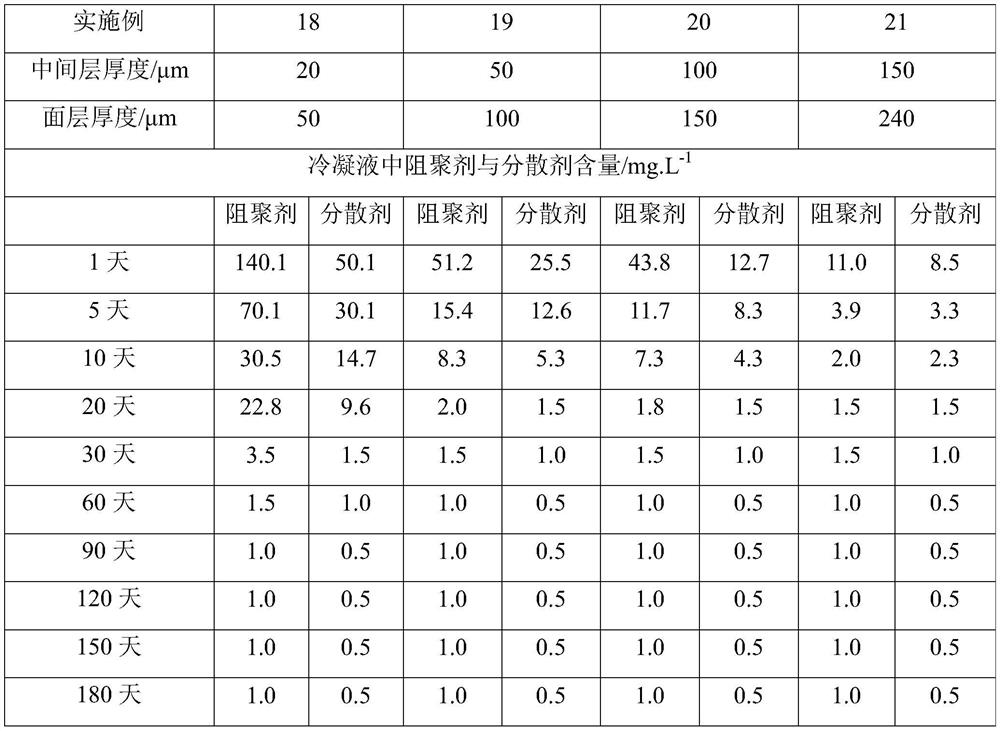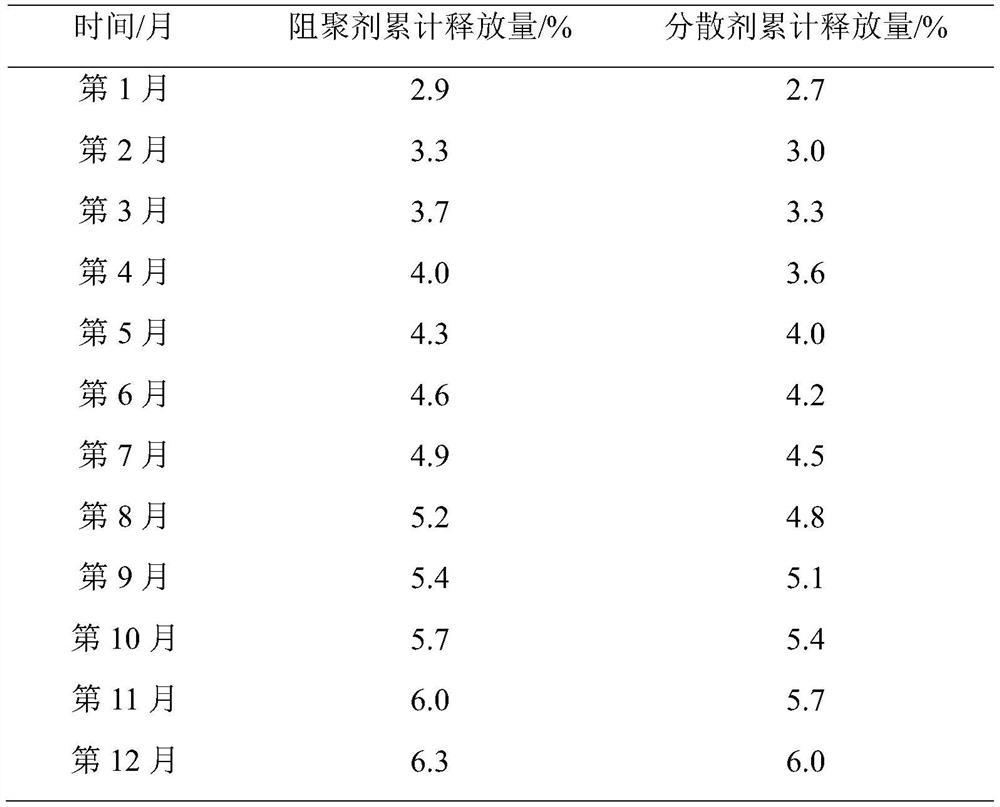Polymerization-inhibiting coating and its preparation method and application in styrene monomer storage tank
A technology of coating and polymerization inhibition, applied in coatings, chemical instruments and methods, epoxy resin coatings, etc., can solve the problems of decreased polymerization inhibition effect, etc. Effect
- Summary
- Abstract
- Description
- Claims
- Application Information
AI Technical Summary
Problems solved by technology
Method used
Image
Examples
Embodiment 1~5
[0040] Embodiment 1~5: coating base material preparation
[0041] In a 1L reactor with a stirrer and a reflux condenser, add 300g of EP828 epoxy resin and 100g of dimethylethanolamine, and heat up under nitrogen to prepare the coating base material. The finished product curing agent is added to the prepared base material for stirring, wherein the mixing ratio of the base material and thick paste amine adduct is 6:1 (volume ratio), and the stirring time is 0.3h. Then paint the above-mentioned epoxy resin paint on the standard tin plate (50×100×0.2~0.3mm), and the thickness of the coating is about 100 μm. After the coating was dry, the adhesion was tested, and the test results under different reaction conditions are shown in Table 1.
[0042] Table 1 Preparation conditions of base material for coating surface layer
[0043] Example Reaction temperature / ℃ Reaction time / h Coating Adhesion 1 95 5 Level 3 2 105 3 Level 2~3 3 115 3 Level 2~3 ...
Embodiment 6~10
[0045] Embodiments 6-10: Preparation of coating intermediate layer
[0046] In a 10L reactor with a stirrer, add the epoxy resin paint base material described in Example 3, add p-tert-butylcatechol (TBC) and dihydroxypropyl catechol (TBC) that are uniformly ground to the system in proportion under stirring conditions Hydroxylamine (HPHA) compound, the ratio of TBC / HPHA is 7:1, heat preservation reaction for 1h, to obtain coating base materials with different polymerization inhibition properties. Before painting, add the auxiliary material thick paste amine adduct to the above-mentioned base material for stirring, wherein the mixing ratio of base material and thick paste amine adduct is 6:1 (volume ratio), and the stirring time is 0.5h. Then paint the above material on the standard tinplate plate (50×100×0.2~0.3mm), and the coating thickness is about 100 μm. After the coating was dry, the adhesion was tested, and the test results under different reaction conditions are shown i...
Embodiment 11~17
[0050] Embodiment 11~17: coating surface layer preparation
[0051] Add the auxiliary material thick paste amine adduct into a 10L reactor with a stirrer, after the dispersant is ground evenly, add it into the reactor under stirring conditions, and keep it warm for 0.5-2 hours to obtain coating auxiliary materials with different dispersion properties . Add the auxiliary material to the base material for stirring before painting, wherein the mixing ratio of base material and auxiliary material is 8:1 (volume ratio), and the stirring time is 1h. Then paint the above material on the standard tinplate plate (50×100×0.2~0.3mm), and the coating thickness is about 80 μm. After the coating dries up, the adhesion is tested, and the results are shown in Table 3:
[0052] Table 3 Preparation conditions of coating surface layer
[0053] Example Dispersant type Amount of dispersant / % temperature reflex Reaction time Coating Adhesion 11 Triphenylphosphine 1 20 ...
PUM
| Property | Measurement | Unit |
|---|---|---|
| thickness | aaaaa | aaaaa |
| thickness | aaaaa | aaaaa |
| thickness | aaaaa | aaaaa |
Abstract
Description
Claims
Application Information
 Login to View More
Login to View More - R&D
- Intellectual Property
- Life Sciences
- Materials
- Tech Scout
- Unparalleled Data Quality
- Higher Quality Content
- 60% Fewer Hallucinations
Browse by: Latest US Patents, China's latest patents, Technical Efficacy Thesaurus, Application Domain, Technology Topic, Popular Technical Reports.
© 2025 PatSnap. All rights reserved.Legal|Privacy policy|Modern Slavery Act Transparency Statement|Sitemap|About US| Contact US: help@patsnap.com


